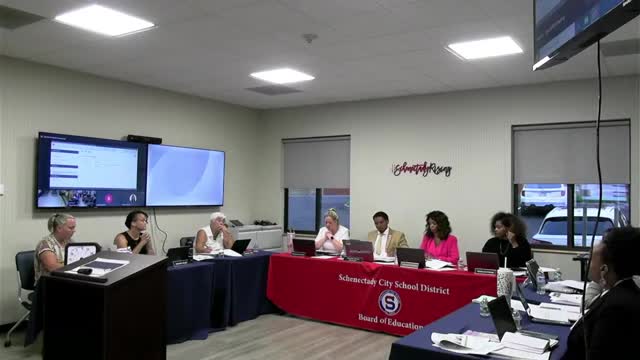School Security Debate Intensifies Over Weapon Detection Systems
August 15, 2024 | Schenectady City School District, School Districts, New York
This article was created by AI summarizing key points discussed. AI makes mistakes, so for full details and context, please refer to the video of the full meeting. Please report any errors so we can fix them. Report an error »

In a recent school board meeting, discussions centered around the implementation of advanced weapon detection systems in schools, with a focus on balancing security needs and maintaining a welcoming environment for students. Board members expressed concerns regarding the perception of such systems, particularly metal detectors, which some believe may appear uninviting and could negatively impact school culture.
One board member highlighted that a significant portion of incidents in schools involved knives, which current detection systems may not effectively identify. This raised questions about the adequacy of existing security measures and whether alternative solutions could enhance safety without compromising the school's atmosphere. The response emphasized a layered approach to security, prioritizing the prevention of firearms in schools while acknowledging the challenges posed by smaller weapons like knives.
The conversation also touched on the data collected by the detection systems, with inquiries about the demographics of students subjected to searches. It was noted that while the systems provide alert rates and can track the effectiveness of searches, they do not capture racial demographics, raising concerns about potential biases in security practices.
Critics of the proposed systems pointed to research indicating that increased surveillance disproportionately affects students of color and questioned the efficacy of such measures in preventing violence. They argued that fostering positive relationships within the school community has proven more effective in addressing safety concerns, citing successful interventions based on trust and communication rather than technology.
The meeting concluded with a call for a careful evaluation of security measures, emphasizing the importance of maintaining a supportive school environment while ensuring student safety. Board members acknowledged the need for ongoing dialogue about the best strategies to protect students without resorting to measures that could alienate them.
One board member highlighted that a significant portion of incidents in schools involved knives, which current detection systems may not effectively identify. This raised questions about the adequacy of existing security measures and whether alternative solutions could enhance safety without compromising the school's atmosphere. The response emphasized a layered approach to security, prioritizing the prevention of firearms in schools while acknowledging the challenges posed by smaller weapons like knives.
The conversation also touched on the data collected by the detection systems, with inquiries about the demographics of students subjected to searches. It was noted that while the systems provide alert rates and can track the effectiveness of searches, they do not capture racial demographics, raising concerns about potential biases in security practices.
Critics of the proposed systems pointed to research indicating that increased surveillance disproportionately affects students of color and questioned the efficacy of such measures in preventing violence. They argued that fostering positive relationships within the school community has proven more effective in addressing safety concerns, citing successful interventions based on trust and communication rather than technology.
The meeting concluded with a call for a careful evaluation of security measures, emphasizing the importance of maintaining a supportive school environment while ensuring student safety. Board members acknowledged the need for ongoing dialogue about the best strategies to protect students without resorting to measures that could alienate them.
View full meeting
This article is based on a recent meeting—watch the full video and explore the complete transcript for deeper insights into the discussion.
View full meeting
